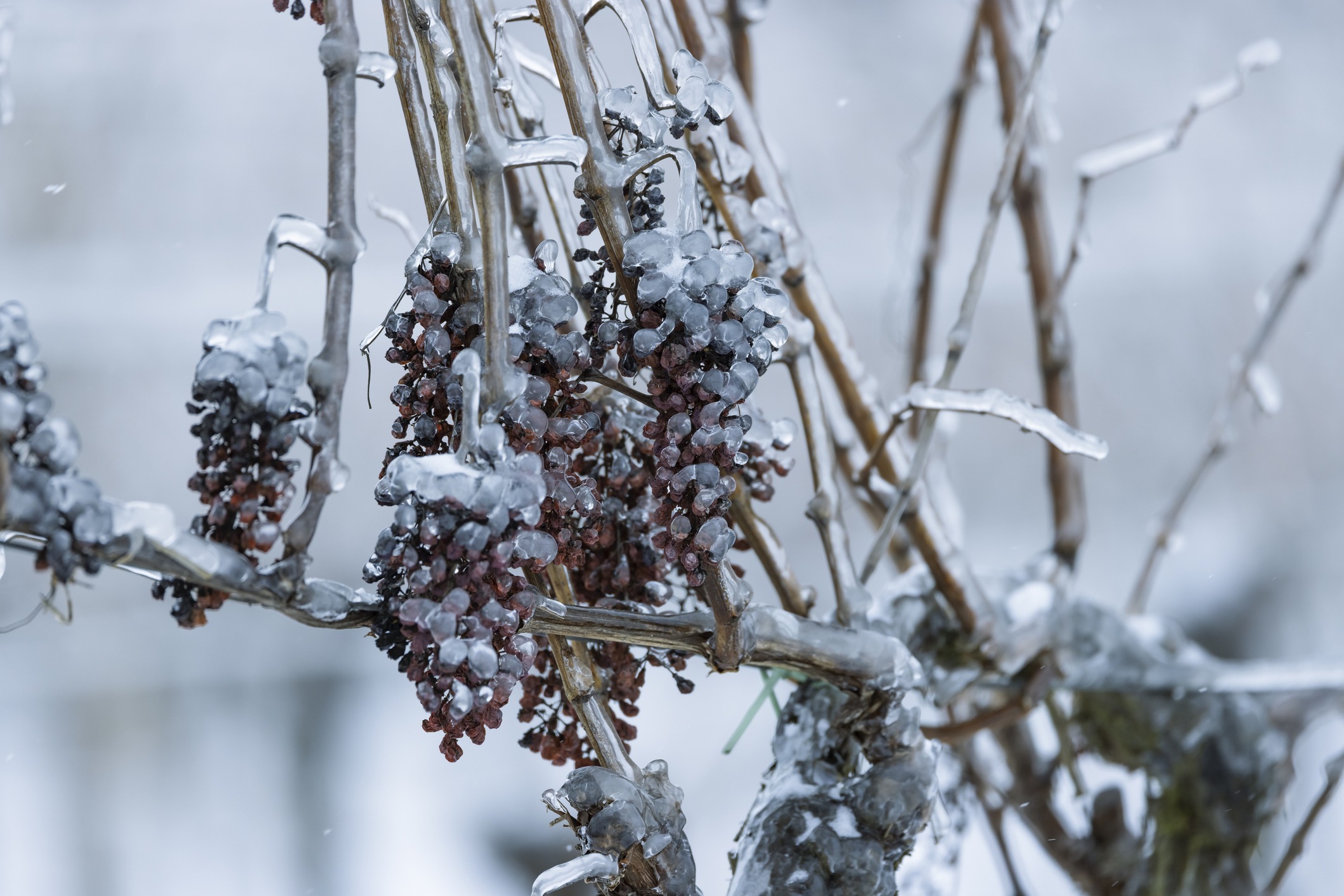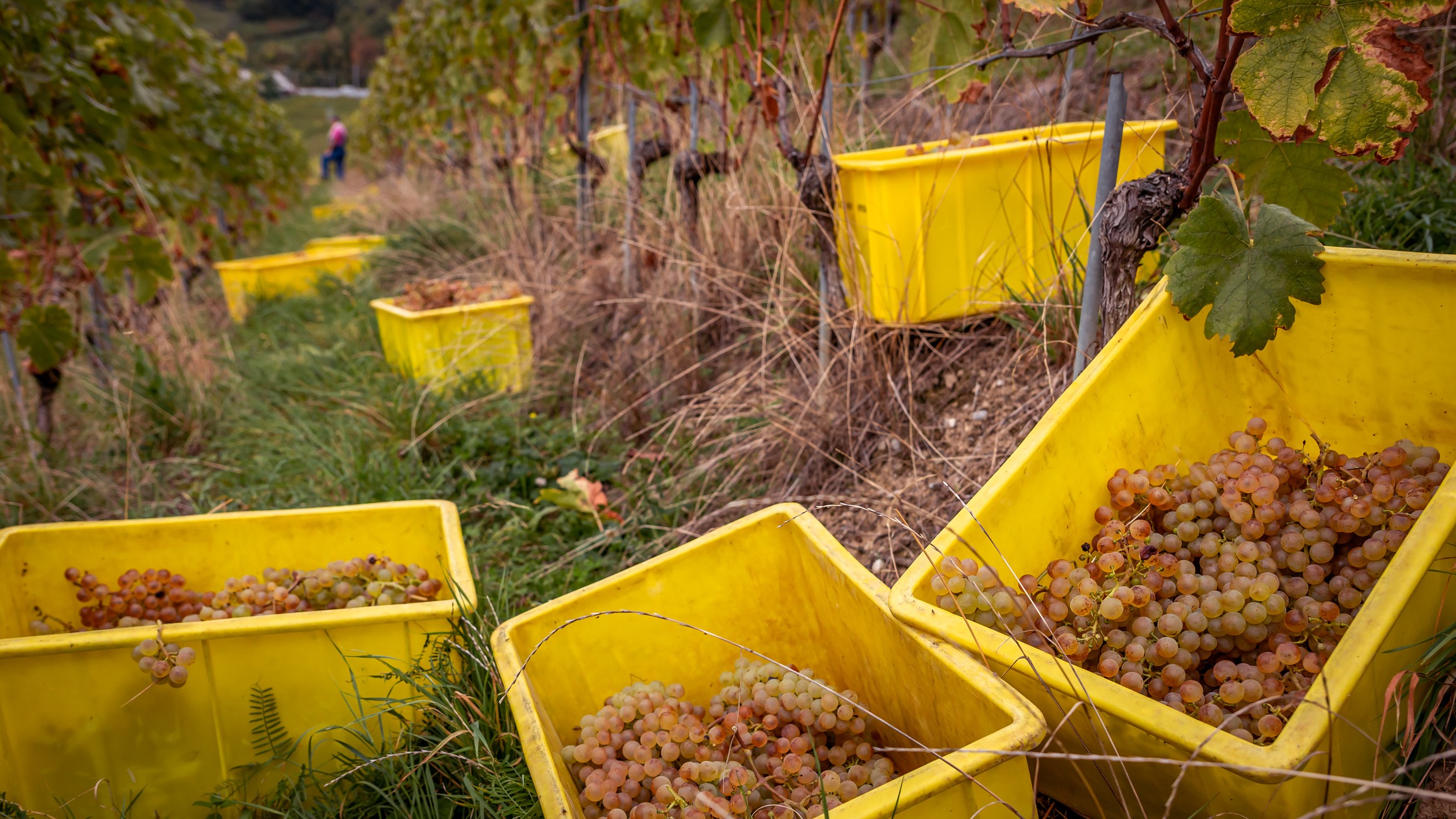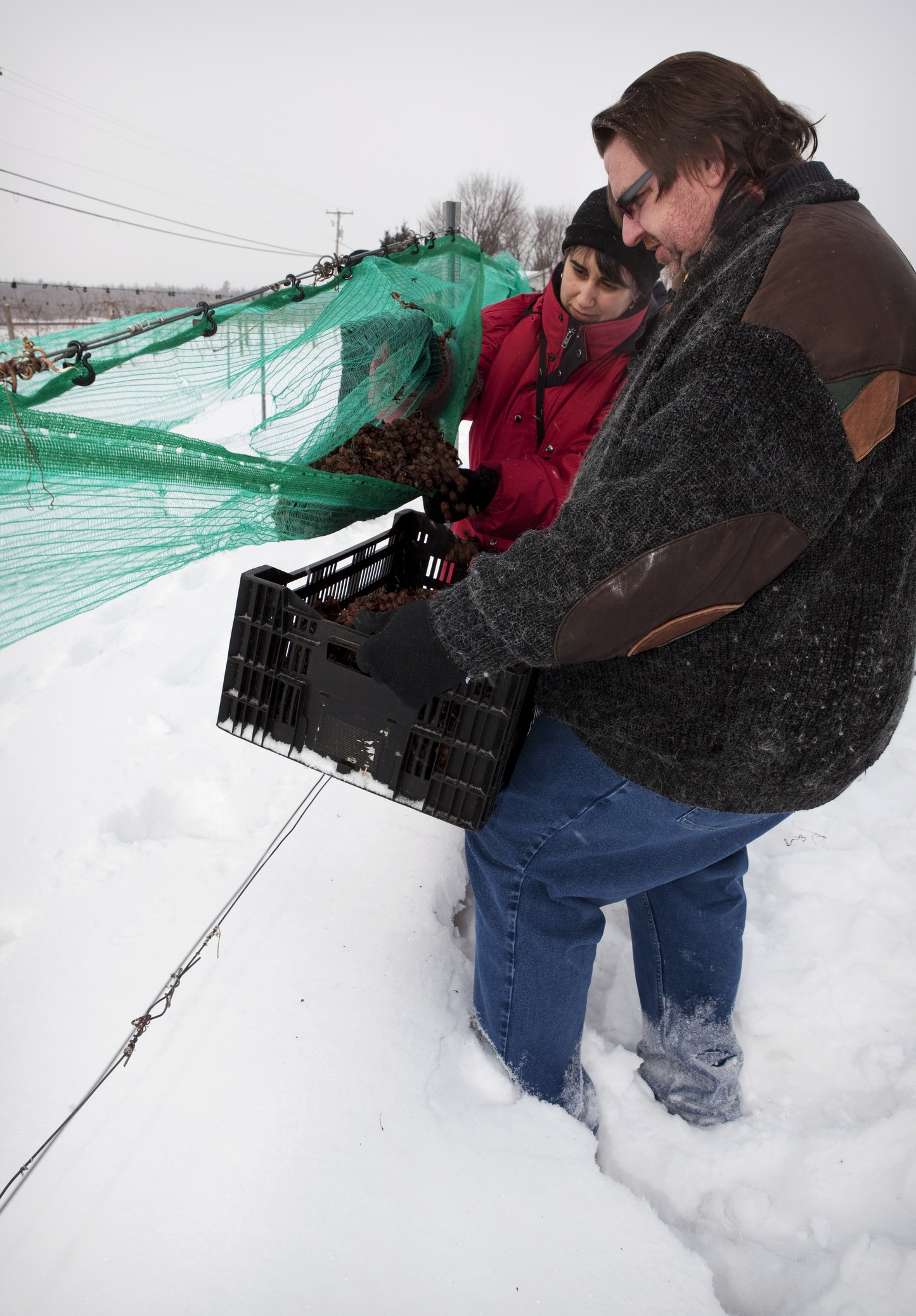Ice wine and late harvest wine are both sought after for their rich sweetness and complexity, but they arise from distinct production methods that set them apart in the world of dessert wines. Ice wine is a type of late harvest wine, yet not all late harvest wines qualify as ice wine. Fundamentally, what distinguishes them is the condition under which the grapes are picked and processed.
Late harvest wines feature grapes left on the vine longer than typical harvesting periods, allowing natural dehydration to concentrate the sugars and flavors. This process can result in a variety of late harvest wine styles, including those affected by noble rot, contributing to their unique flavor profiles. These wines are celebrated for their higher sugar content and often exhibit a luscious, syrupy quality.
In contrast, ice wine production involves harvesting the grapes specifically during the freezing temperatures where the water content within the grapes freezes, but the sugars do not. The pressing of these frozen grapes leads to a smaller yield of highly concentrated, sweet juice that becomes the hallmark of ice wine. This distinct process results in wines noted for their intense sweetness and aromatic bouquet, often with a balanced acidity that gives a refreshing finish despite the high sugar levels.
Production Process
The production of Ice Wine and Late Harvest Wine involves meticulous grape selection and timing, setting them apart as unique dessert wines. Each step, from harvesting to maturation, is crucial in shaping their distinct character, influenced by sugar levels, acidity, and grape variety.
Harvesting and Grape Selection
Ice Wine grapes are typically harvested at temperatures around -8 to -6°C (16-20°F), and the grapes must be frozen on the vine. The ideal varieties for Ice Wine include Vidal and Riesling due to their ability to retain high acidity levels. Late Harvest Wine, on the other hand, involves picking riper grapes that have been left on the vine longer than normal harvest but are not frozen. Grapes such as Chardonnay are often selected for their heightened sugar levels, which concentrate even further as the grapes dehydrate naturally.
Freezing and Pressing
For Ice Wine, the grapes are typically hand-picked at night to ensure their frozen state is maintained. This is essential as pressing unfrozen grapes would not yield the concentrated must required for Ice Wine. Late Harvest Wine grapes are pressed in a similar manner to standard wines, but the higher sugar content of the riper grapes leads to a richer, more viscous juice.
Fermentation and Maturation
Both wines undergo a fermentation process that is often longer and slower due to the higher sugar content, which can be more challenging for yeasts to convert into alcohol. This results in dessert wines with high residual sugar levels. Ice Wine typically has a shorter maturation period to preserve its vibrant fruitiness and acidity. In contrast, Late Harvest Wine may be aged longer to develop complexity and depth of flavor. Both wines, however, share the characteristic of balancing sweetness with acidity to create a harmonious profile.
Defining Characteristics
In understanding the nuances of ice wines and late harvest wines, one must consider their flavor profiles, sugar content, and acidity. Each of these factors contributes to the distinct experience these wines provide.
Flavor Profiles
When it comes to flavor profiles, ice wines often present a concentrated burst of fruit flavors like apricot, peach, and lychee, alongside rich honey aromas. This is due to the grapes freezing on the vine, which intensifies their inherent sweetness and flavors. In contrast, late harvest wines still harbor sweet and sweeter fruit flavors, but they may also have hints of raisined notes because the grapes are left on the vine to overripen and naturally dehydrate before they are picked.
Sweetness and Sugar Content
Sweetness in both ice wines and late harvest wines is primarily due to the high levels of residual sugar. Ice wines generally have a higher sugar content because the freezing process increases sugar concentration within the grapes. A typical comparison might look like this:
- Ice Wines: Residual Sugar > 180 g/L
- Late Harvest Wines: Residual Sugar = 120-180 g/L
The residual sugar levels significantly influence the perceived sweetness on the palate, with ice wines often being markedly sweeter.
Acidity and Balance
Despite their sweetness, a hallmark of quality ice and late harvest wines is their acidity. This critical component balances the high sugar levels, preventing the wines from becoming cloyingly sweet. Ice wines retain a notable acidity, which is essential in creating a well-balanced wine that pairs well with food. Late harvest wines, while also sweet, should demonstrate a balance between acidity and sugar, accounting for a harmonious flavor profile.
Regional Variations
The production of Icewine and Late Harvest wines significantly varies by region, influenced by local climate conditions and wine-making traditions.
Canada’s Icewine
Canada, particularly Ontario, is renowned for its Icewine, which is often made from Vidal or Riesling grapes. Canadian Icewine relies on the grapes naturally freezing on the vine, where they must reach a consistent temperature of -8 degrees Celsius or colder before harvest. This process typically occurs between December and February. The resulting wine is rich in natural sugars and acidity, giving it a characteristic balanced sweetness.
Germany’s Eiswein
Eiswein in Germany shares similarities with Canadian Icewine, notably the requirement for the grapes to freeze naturally. German law mandates that temperatures must drop to -7 degrees Celsius or lower. Traditionally, Germany uses Riesling grapes, but other varieties like Silvaner can also be used. German Eiswein is known for its high-quality and concentrated flavors, often influenced by the presence of noble rot, or Botrytis cinerea, which adds complexity to the wine.
Late Harvest Wines Across the Globe
In contrast, Late Harvest wines have a broader geographic footprint. They are produced in several renowned regions where weather conditions do not permit the natural freezing of grapes. For example:
- Sauternes in Bordeaux, France, is famous for its Botrytis-affected sweet wines, offering flavors of apricot and honey.
- New York’s Finger Lakes, Austria, and Washington State produce both ice and Late Harvest wines, utilizing the natural autumnal frost in certain years.
- In regions where grapes do not freeze, Late Harvest wines are created from grapes left on the vine to overripen and sometimes affected by noble rot, which adds to the complexity of the wine.
This diversity in climates and regional wine-making laws and traditions contributes to the rich array of dessert wines available to connoisseurs worldwide.
Culinary Pairings
When selecting the perfect culinary pairings for ice wines and late harvest wines, the key is to consider the intensity of sweetness and the balance of acidity within these dessert wines.
Sweetness Complements
Ice Wines: Rich in sweetness, ice wines, like those made from the Vidal Blanc grape, are ideal for serving with desserts that are less sweet than the wine itself. The lush profiles of ripe pineapple and subtle jasmine undertones pair elegantly with:
- Fruit-based desserts such as tarts or fruit sorbets
- Creamy desserts like crème brûlée or panna cotta
Late Harvest Wines: These wines complement a broader range of sweet dishes, given their concentration of ripe flavors. Suitable pairings for late harvest wines include:
- Rich pastries that aren’t overly sweet, allowing the wine’s complexity to shine
- Blue cheeses, where the mold harmonizes with the wine’s sweetness
Acidity and Texture
Ice Wines: Known for their refreshing acidity, ice wines cut through the richness of:
- Foie gras, creating a balance between the wine’s sweetness and the foie gras’ savory depth
- Pâté, where the acidity in the wine contrasts and elevates the creamy texture
Ice wines should be served in proper dessert wine glasses to enhance the tasting experience, focusing on their crisp texture.
Late Harvest Wines: The voluptuous texture of late harvest wines works well with:
- Savory cheeses, offering a creamy counterpoint to the wine’s viscosity
- Spiced or salty nuts, contrasting with the sweet, concentrated flavor profiles
Late harvest wines are versatile in their pairings and can also be served in dessert wine glasses to accentuate their aromatic qualities.
Both ice wines and late harvest wines should be served chilled, to elevate the sensory experience of their culinary pairings. Wineries like Inniskillin produce high-quality ice wines that exemplify these pairing principles.
Collecting and Serving
When collecting and serving ice wines and late harvest wines, optimal storage conditions are crucial, and the approach to decanting and choice of glassware can significantly enhance the tasting experience.
Storage Conditions
Ice wines and late harvest wines, being dessert wines, demand meticulous storage conditions. They should be stored at a consistent temperature that ideally ranges between 50-57°F (10-14°C). Humidity levels need to be monitored as well, ideally kept at around 70% to prevent cork drying. For long-term collecting, these wines should be stored on their sides to maintain cork moisture, ensuring a tight seal and protecting them from oxidation.
Ideal Storage Conditions for Dessert Wines:
- Temperature: 50-57°F (10-14°C)
- Humidity: ~70%
- Position: Lying on their side
Decanting and Glassware
Decanting is typically not necessary for ice wines or late harvest wines. These wines do not accumulate significant sediment due to their freezing and late picking processes. Serving them slightly chilled will help to elevate their rich flavors and aromatic profiles. For ice wines, which can be intensely sweet with a high concentration of sugar due to the freezing of the grapes, it is important to serve them in small amounts as one would with a liqueur.
Proper glassware is essential for maximizing the tasting experience of these wines. Glasses for dessert wines tend to be smaller with a narrow bowl to concentrate the bouquet. A typical dessert wine glass features:
- A small, narrow bowl: To concentrate the volatile aromas
- A long stem: To prevent warming the wine with one’s hands
For late harvest wines, which may exhibit a wide range of flavors due to the late picking and higher concentration of sugars by natural dehydration, utilizing slightly larger glasses can be beneficial for exploring the intricate aromas. Ice wines, such as those made from the Vidal Blanc grape, benefit from tulip-shaped glasses that capture its delicate nuances. A live yeast fermentation, often lasting until December or beyond, can contribute complex flavors to these wines, and proper serving ensures these characteristics are fully appreciated.
Final Thoughts
Ice Wine and Late Harvest Wine, while similar in their sweet, intense flavors and late-season harvesting, are distinguished by their unique production processes and the conditions under which the grapes are harvested. Ice Wine’s rarity and distinctive method of production, requiring the grapes to freeze naturally on the vine, contribute to its exclusivity and higher price point. Late Harvest Wine, more versatile in its production, allows for a broader range of grape varieties and styles, making it a more accessible option for those seeking a sweet wine experience. Both, however, offer a delightful exploration into the world of dessert wines, each telling a story of patience, timing, and the artistry of winemaking. Whether you prefer the crisp, concentrated sweetness of Ice Wine or the rich, complex flavors of Late Harvest Wine, both styles represent the beauty and diversity of winemaking and are a testament to the creative adaptability of vineyards to their climatic conditions.


